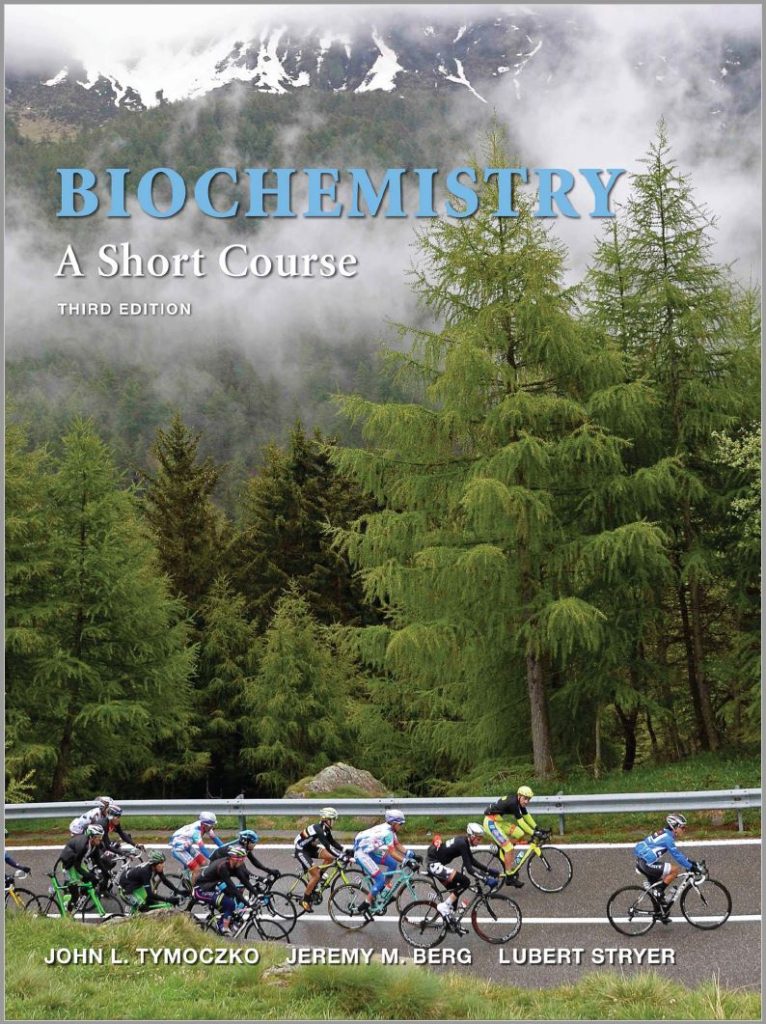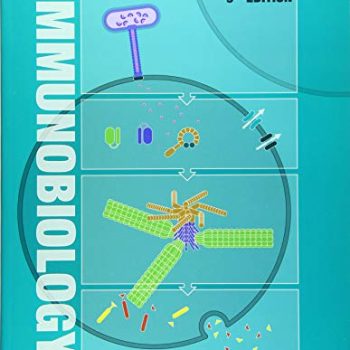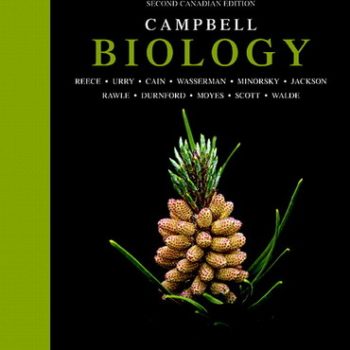Tymoczko’s Biochemistry A Short Course THIRD EDITION Six Month Access John L. Tymoczko Test Bank
C
|
Below is a list of five tripeptides identified by their single letter codes. They are listed as A, B, C, D, and E. Which tripeptide contains an amino acid capable of forming covalent disulfide bonds? |
|
|
A) FNC |
|
|
B) RGK |
|
|
C) VIL |
|
|
D) MDE |
|
|
E) SYT |
|
|
Ans: A Section: 3.2 |
|
Below is a list of five tripeptides identified by their single letter codes. They are listed as A, B, C, D, and E. Which tripeptide is negatively charged at physiological pH? |
|
|
A) FNC |
|
|
B) RGK |
|
|
C) VIL |
|
|
D) MDE |
|
|
E) SYT |
|
|
Ans: D Section: 3.2 |
|
Below is a list of five tripeptides identified by their single letter codes. They are listed as A, B, C, D, and E. Which tripeptide has the most polar side chains? |
|
|
A) FNC |
|
|
B) RGK |
|
|
C) VIL |
|
|
D) MDE |
|
|
E) SYT |
|
|
Ans: E Section: 3.2 |
|
Where are Trp and Phe found in a globular protein and why? |
|
|
A) exterior due to the hydrophilic effect |
|
|
B) interior due to the hydrophobic effect |
|
|
C) exterior forming polar H-bonds with water |
|
|
D) interior forming ionic bonds with other amino acids |
|
|
E) exterior forming ionic-polar bonds with water |
|
|
Ans: B Section: 3.2 |
|
Amino acids contain all of the following functional groups except: |
|
|
A) indole. |
|
|
B) thioester. |
|
|
C) phenyl. |
|
|
D) sulfhydryl. |
|
|
E) amine. |
|
|
Ans: B Section: 3.2 |
Short-Answer Questions
|
What is the advantage of having multiple functional groups in proteins? |
||
|
Ans: |
The rich diversity of functional groups in proteins can contribute independently to protein structure and accounts for the diversity in function as well. |
|
|
Section: Introduction |
||
|
What is the advantage of protein interaction and assembly with other proteins? |
||
|
Ans: |
When proteins interact or assemble, new functions and specificity become available. These protein interactions provide multifunctional activity and specificity. |
|
|
Section: Introduction |
||
|
Draw the general structure of an amino acid at pH 7.0 with the side group shown as an “R.” |
||
|
Ans: |
The figure should look like either one of the structures shown in the left margin on p. 38. |
|
|
Section: 3.1 |
||
|
Why is the central carbon on an amino acid so important? |
||
|
Ans: |
This is the chiral center of the molecule and is linked to each important functional group of an amino acid. |
|
|
Section: 3.1 |
||
|
Draw the structure of alanine, aspartic acid, and histidine when the pH is 1.0, 7.0, and 12.0. |
||
|
Ans: |
Use the figures in your book and the pKa for each functional group to determine the ionization state for each amino acid. |
|
|
Section: 3.2 |
||
|
What is the net charge of each the following amino acid: alanine, aspartic acid, and histidine when the pH is 1.0, 7.0, and 12.0? |
||
|
Ans: |
For alanine, the charges are: 1, 0, and −1. For aspartic acid, the charges are: 1, −1, and −2. For histidine, the charges are: 2, 0, and −1. |
|
|
Section: 3.2 |
||
|
A gene is mutated so the amino acids glycine and glutamate are now alanine and leucine, respectively. What are the potential results of each of these mutations? Assume that the mutations are not near each other in the primary sequence and have no impact on the other. |
||
|
Ans: |
The glycine-to-alanine mutations are similar and will have little or no effect. Glutamate and leucine have very different chemistries and will impact the function and structure of the protein, as one is charged and water soluble, and the other is hydrophobic and nonpolar. |
|
|
Section: 3.2 |
||
|
What are the four ways amino acids can be classified? |
||
|
Ans: |
hydrophobic, polar, positively charged, and negatively charged |
|
|
Section: 3.2 |
||
|
What are the three aromatic amino acids? |
||
|
Ans: |
phenylalanine, tyrosine, and tryptophan |
|
|
Section: 3.2 |
||
|
Which amino acid side chains are capable of ionization? |
||
|
Ans: |
The amino acids are aspartate, glutamate, histidine, cysteine, tyrosine, lysine, and arginine. |
|
|
Section: 3.2 |
||
|
Which are the branched amino acids, and what impact do they have on protein shape? |
||
|
Ans: |
These are the aliphatic, hydrophobic amino acids, valine, leucine, and isoleucine. They are hydrophobic, which drives the hydrophobic interactions in the interior of a protein. These are also bulky amino acids that will lend to steric strain if forced close to each other in a peptide. |
|
|
Section: 3.2 |
||
|
Draw a titration curve for glycine. |
||
|
Ans: |
Use the information from Section 2.5 and the graph from Figure 3.2. |
|
|
Section: 3.2 |
||
|
What do serine, threonine, and tyrosine have in common? |
||
|
Ans: |
Each has a hydroxyl (–OH) group, which makes the first two amino acids more water soluble and increases the reactivity of all three amino acids. |
|
|
Section: 3.2 |
||
|
Which amino acid is responsible for stabilizing the structure of a protein by forming pairs of sulfhydryl groups? |
||
|
Ans: |
cysteine |
|
|
Section: 3.2 |
||
|
What functions make histadine an important amino acid? |
||
|
Ans: |
The pKa of the imidazole ring is near physiological pH. This means that the side group may be charged and protonated or neutral and deprotonated. This results in an amino acid that can either lend or accept a proton or charge in the active site of an enzyme. |
|
|
Section: 3.2 |
||
|
Which amino acids have a side chain that includes a modified carboxyl group, carboxaminde? |
||
|
Ans: |
asparagine and glutamine |
|
|
Section: 3.2 |
||
|
Which ionizable group has the lowest affinity for protons: the terminal α-carboxyl group, the aspartic acid side group, or the terminal α-amino group? |
||
|
Ans: |
the terminal α-carboxyl group |
|
|
Section: 3.2 |
||
|
Malnourished children with Kwashiorkor display a distended stomach, giving the illusion of being full. Why does this happen? |
||
|
Ans: |
This is a nutritional state where there is an extremely low or poor protein intake in the diet. The osmolar shift of the blood, which is poor in protein content, causes water to flow into the tissues. |
|
|
Section: 3.3 |
||
|
What is the difference between nonessential and essential amino acids? |
||
|
Ans: |
The former are amino acids that humans can generate de novo, or from scratch. The latter cannot be made and must be ingested for the mature formation of proteins. |
|
|
Section: 3.3 |
||
|
List the essential amino acids. |
||
|
Ans: |
histadine, isoleucine, leucine, lysine, methionine, phenylalanine, threonine, tryptophan, and valine |
|
|
Section: 3.3 |
||









Reviews
There are no reviews yet.